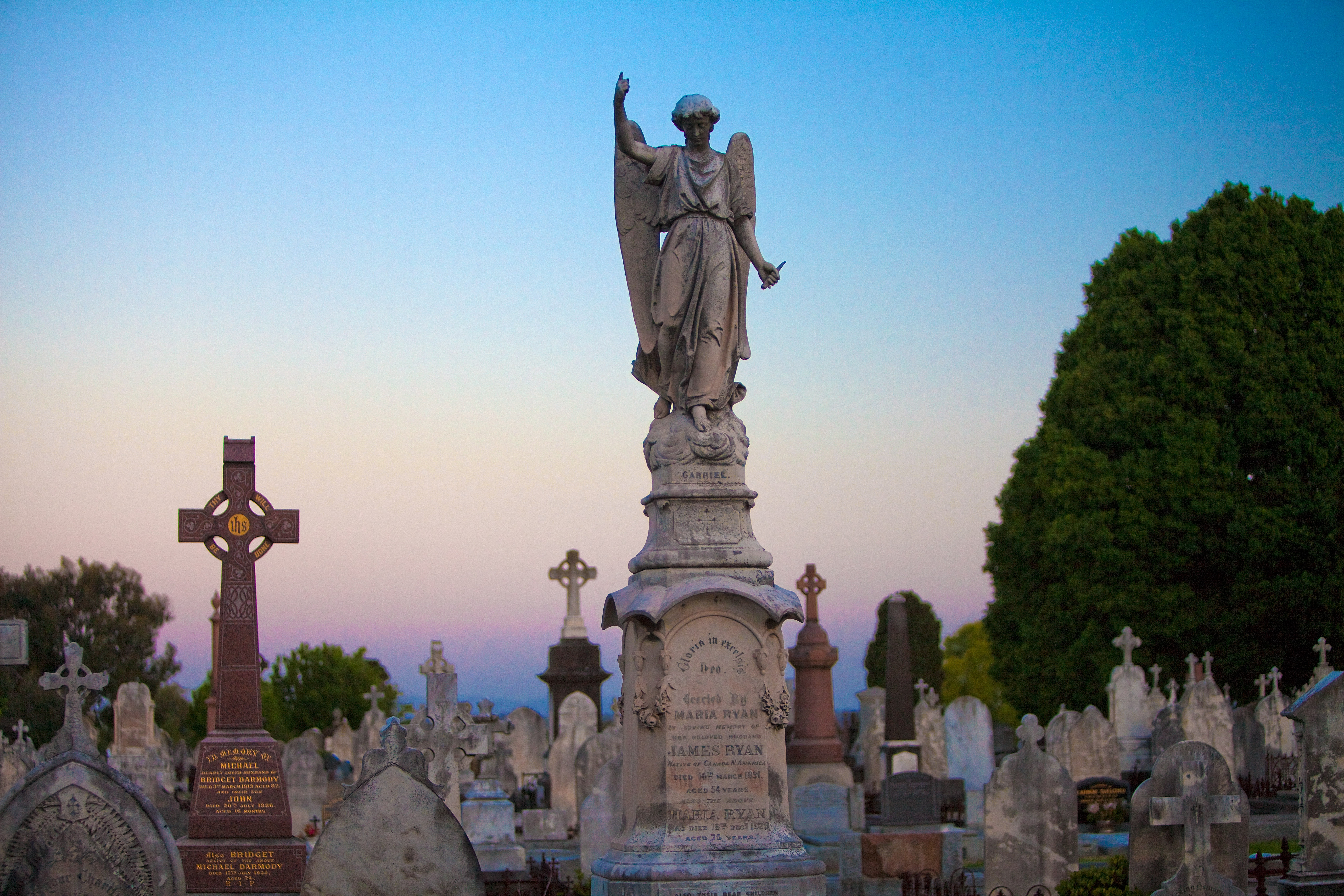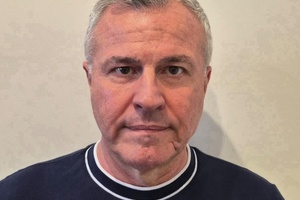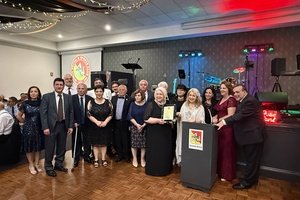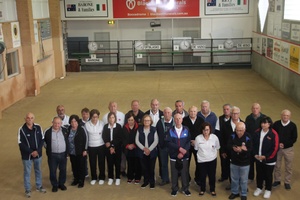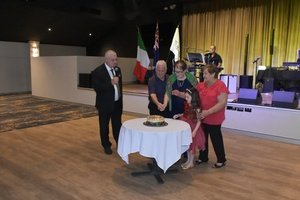When you think about it, cemeteries are, in fact, “open air museums” rich with centuries of history.
However, these sites are often neglected and not treated with the respect they deserve, and at times viewed in a fearful or apprehensive light.
In fact, for many the idea of touring a cemetery in stark daylight is inconceivable, let alone in the shadows of the night.
Historian and cultural heritage manager of the Southern Metropolitan Cemeteries Trust, Celestina Sagazio, has been running guided tours at the Melbourne General Cemetery for years, leading schools and groups around the iconic location, and holding night tours for those more “daring” visitors.
Though the cemetery is regularly frequented by the Italian community in Melbourne whose loved ones are buried there, few look beyond the surface to explore the story embedded in each and every individual tombstone.
The Melbourne Cemetery is one of the city’s oldest, coming second in line to the cemetery which once rose from the ground now occupied by the Queen Victoria Market.
The site extends as far as the eye can see, and comprises 43 hectares of paths which can be navigated by car, picturesque tree-lined avenues, age-old rotundas, Catholic and Jewish chapels, three mausoleums (with a fourth underway), and a heritage listed gatehouse.
The cemetery, located in Carlton, was designed in the mid-1800s, intended as a vast and peaceful park for the public to enjoy, and a space far from any macabre notions associated with death that exist nowadays.
In fact, during those days it was normal to pass warm afternoons strolling through the cemetery and stopping to enjoy a picnic in one of the stunning rotundas which are now protected and listed as historic buildings by Heritage Victoria.
Life after death was exalted by monuments and sculptures, as people wanted to leave a permanent reminder of their story by engraving it into stone for future generations to appreciate.
There are many gravestones at the cemetery which narrate, without much further need for explanation, the stories of rich benefactors, politicians, artists and sporting heroes.
Tombs also acted as an affirmation of one’s social status.
From their graves, the more affluent commissioned stunning artwork by local artisans (some of which travelled to Italy to learn from the best), or they had art imported directly from Rome or Florence.
The less fortunate, however, rarely even had a small cross to mark their gravesite.
It’s in some of these areas, during a period of corruption within the cemetery’s management between 1940 and 1970, that at least 10,000 tombs were removed so as to resell the soil in a response to the growing demand from local residents.
With its 300,000 tombs, the Melbourne Cemetery also allows us to trace the history of immigration in Australia, from the gravestones of German and Chinese migrants who came during the gold rush, to those of Greeks and Italians who settled in Carlton after WWII.
In fact, it was for the Italian community that Victorian legislation was rewritten.
Before the influx of Italians to the area, law declared mausoleums with crypts illegal on sanitation grounds.
Thanks to the modification of this law and the adoption of adequate technologies, three mausoleums were successfully built at the cemetery.
Constantly responding to the growing demand of people who wished to rest in eternity at this historical site, the cemetery also reduced the size of selected avenues to make room for new tombs – which is why precious marble and stone monuments line the main streets.
Sagazio explains that the cemetery’s first tours began around twenty years ago, and despite the sceptics, they're becoming increasingly popular with every year.
All of the organised activities are carried out with great respect, keeping in mind the sacred site in which they take place.
Visitors are guided through a small section on the south-western side of the extensive cemetery, given that it would be impossible to see the whole site in just a couple of hours, which is the usual length of the tours.
The proceeds of the tours are dedicated to the restoration of the oldest tombs and those of great historical significance.
Curiosities
- The Melbourne General Cemetery houses eight state premiers and holds the national record for the most tombs of Australian prime ministers (Sir Robert Menzies, Sir John Gorton and James Scullin, along with and a symbolic memorial to Harold Holt).
- The cemetery also has a monument in memory of Elvis Presley, strongly pushed for by his avid local fan club which was devastated by news of his death. The monument is still frequently visited by devout fans.
- Along the path dotted with relatively well-known members of the Italian community, stands a monument in honour of a tragic event. Decades go in Airport West, the entire Gulle family died in a house fire when a light aircraft crashed into their home.
- Some monuments catch the eyes of visitors more than others, whether it be for their grandiosity or for their originality. Two in particular indicate the professions of their dead immediately. The gravestone of Walter Lindrum is, in fact, shaped like a billiard table in honour of the Australian champion. Not as famous, is Christopher Gee, a fire fighter who died in 1895 trying to put out a boat fire in the harbour. The tomb, built in Gee’s honour by his colleagues, illustrates his tragic death through its intricate bas reliefs, and is adorned with a fire hose and helmet. Were it not for this monument, Gee’s story may have been forgotten in the mists of time.
- Among the recent projects funded with profits from the guided tours, was the laying of a plaque at the base of a monument in honour of Sir Redmond Barry, a colonial judge at the Supreme Court of Australia who sentenced Ned Kelly to death. Barry also played a fundamental role in the establishment of the State Library, the University of Melbourne and the Royal Melbourne Hospital. He lived with his partner, Louisa Barrow of humble Irish origins, for 34 years and they had four children without ever legitimising their relationship by marriage. Louise was buried alongside Barry, but up until a few months ago, there was never any trace of her presence. Gossip also circulated during those times, and certain “juicy” stories were evident on the tombstones themselves. Some say that the stunning bronze sculpture of a woman crying at the base of a monument dedicated to politician, lawyer and Lord Mayor of Melbourne, Sir Samuel Gillot, is not just a symbolic image common across many 19th century cemeteries. Instead, the sculpture could be representative of Gillot’s alleged “funding” of the activities of Madam Brussels, proprietor of Melbourne’s most renowned brothels.
- The Melbourne General Cemetery also hosts one of our city’s most famous ghosts. Federici, whose nickname gives the impression of Italian background, was actually an Englishman by the name of Frederick Baker, who was born in Florence. His story is well known: Federici died of an illness at the Princess Theatre while he was playing the devil in Gounod’s “Faust”. At his funeral, the priest also succumbed to illness. But the legend doesn’t end there. We won’t reveal the rest of the story, but if you want to find out more you can book a group tour organised by the South Metropolitan Cemeteries Trust. For further information, contact Celestina Sagazio on (03) 8558 8210 or via email at celestina.sagazio@smct.org.au.



